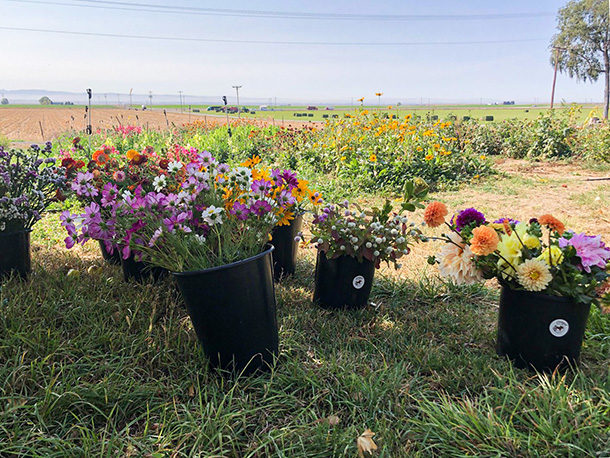I woke up with a start, panicked that I’d overslept. I rolled onto my side and grabbed my phone on my bedside table. It was only 3 a.m. I flopped back down and then decided to get up and at least check. I swung my feet out of bed and padded in my bare feet to the laundry room.
The weather station monitor we’d mounted over the washing machine read 35ºF. It was colder than I hoped, but even if the temperature dropped another five degrees before sunrise, I’d be fine. I’d read that these plants could overwinter in growing zone 7. I’m growing zone 6 with a tendency to act like 5. The problem was I didn’t really know how cold was too cold. It was the end of March, and I thought as long as I didn’t get any lows below 20ºF, I should be fine. They should be fine. All the work of the last three months should be fine.
This early morning anxiety started with a thought to diversify our farming operation. For several years, I’d been looking for a crop that I could incorporate into our farm. I had three requirements for the crop: First, I needed to independently manage it. Second, it had to grow on less than 2 acres. And third, I needed it to be highly profitable per acre. It was a tough list. I thought about strawberries, veggie crops, and even did a short-lived investigation into inoculating an area of our farm with truffles. Eventually, I stumbled into specialty cut flowers, and I knew I’d found my crop.
In the spring before my first season as a newly minted flower-farmer, a well-meaning neighbor tried to warn me off the endeavor. He said, “This isn’t the tropics, Erica. With our wind, I can already see flower petals everywhere.” His warning bothered me. I knew flowers were an unconventional choice, but I wasn’t the first to grow cut flowers in an inclement climate, and by the looks of manicured lawns across our valley, there was no reason I couldn’t grow flowers.
Last month I spoke to an agricultural entrepreneurship class at our local community college. One of the students asked me what the hardest part about my farm-business was. Immediately, I answered, “The weather.” The professor, a skeptic of my business anyway, commented, “I bet the weather is hard. This isn’t Holland, flowers were never meant to grow in southern Idaho.”
The comment was reminiscent of my neighbors’ comment, though said more softly. Not wanting to disagree, but needing to make my point, I shrugged my shoulders and said, “Nature never meant potatoes to grow in southern Idaho either.” He relinquished me the argument, and I continued on.
I acknowledge the point these two gentlemen were trying to make; our weather is by far the hardest part of growing flowers. But I’ve realized that weather, and by extension Mother Nature, is the hardest part about farming, period. Regardless of if you are growing specialty-cut flowers in southern Idaho or alfalfa hay in the desert in New Mexico, weather is an issue. For the past 10,000 years, want-to-be farmers have worked, sometimes with and sometimes against Mother Nature, to conform our desired crops to her conditions.
Southern Idaho is a major exporter of potatoes and alfalfa hay. Area farmers pride themselves in the quality of crops we produce. But left to nature and weather patterns, we’d grow a handful of shrunken potatoes and our hay would wither and die. Nature meant southern Idaho to grow sagebrush and lava rock. Left to nature, the gorgeous corn fields in the Midwest would be prairie grass and the lush green acres in the east would be forest ground. We’d be out of a job, and there would be a lot of hungry Americans.
Farmers and scientists have admirably adapted crops, seeds, growing conditions, irrigation measures and other technology to the production of food and, in my case, ornamentals. It is something we take a lot of pride in or there wouldn’t be contests at the World Ag Expo for production metrics. Working with nature is what makes the occupation of farming difficult, sometimes heartbreaking and always a challenge.
So, this month I say Happy Earth Day to the original environmentalists, nature worshippers, weather watchers and top-notch farmers. Keep working with, and sometimes for, Mother Nature and let your success keep your nay-sayers at bay. It’s going to be a great farming season.










